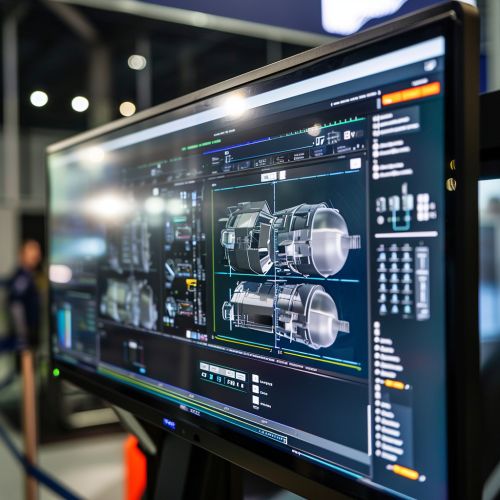Simulation
Overview
A simulation is a computer program that attempts to simulate an abstract model of a particular system. Simulations are used in many contexts, such as simulation of technology for performance optimization, safety engineering, testing, training, education, and video games. Simulations are used to gain insight into the operation of a system, or to examine the effects of different components or tuning parameters.
History
The concept of simulation has been around for centuries. However, it was not until the advent of computers in the mid-20th century that simulation became a practical tool for solving real-world problems. The first computer simulations were done in the fields of physics and mathematics.
Types of Simulations
There are many different types of simulations, each with its own specific applications and techniques. Some of the most common types include:
Physical Simulations
Physical simulations are used to model physical phenomena such as the flow of water, the motion of a car, or the behavior of a gas. These simulations use mathematical models that describe the physical laws governing the system.
Process Simulations
Process simulations are used to model processes such as manufacturing operations, chemical reactions, or business processes. These simulations use mathematical models that describe the sequence of events in the process.
System Simulations
System simulations are used to model complex systems such as a city's transportation network, a company's supply chain, or the global climate. These simulations use mathematical models that describe the interactions between different components of the system.
Simulation Techniques
There are several different techniques used in simulation, including:
Discrete Event Simulation
Discrete event simulation is a technique where the state of the system changes at discrete points in time. This is often used in simulations of systems where events occur at random times, such as a call center or a manufacturing plant.
Continuous Simulation
Continuous simulation is a technique where the state of the system changes continuously over time. This is often used in simulations of physical systems, such as the motion of a car or the flow of water.
Monte Carlo Simulation
Monte Carlo simulation is a technique where a large number of simulations are run with random inputs, and the results are analyzed to determine the probability of different outcomes. This is often used in simulations of systems with a high degree of uncertainty, such as financial forecasting or risk analysis.
Applications of Simulation
Simulation is used in a wide variety of fields, including engineering, healthcare, military, education, and entertainment. Some of the most common applications include:
Engineering
In engineering, simulations are used to predict the performance of a design before it is built. This can save time and money by reducing the need for physical prototypes and testing.
Healthcare
In healthcare, simulations are used to train medical professionals, to plan surgical procedures, and to predict the spread of diseases.
Military
In the military, simulations are used to train soldiers, to plan missions, and to predict the outcomes of battles.
Education
In education, simulations are used to teach concepts in a hands-on, interactive way. This can make learning more engaging and effective.
Entertainment
In entertainment, simulations are used to create realistic environments and physics in video games and virtual reality experiences.
Future of Simulation
With the rapid advances in computing power and the development of new simulation techniques, the future of simulation looks promising. Simulations are becoming more accurate, more detailed, and more complex, opening up new possibilities for research, design, and entertainment.


